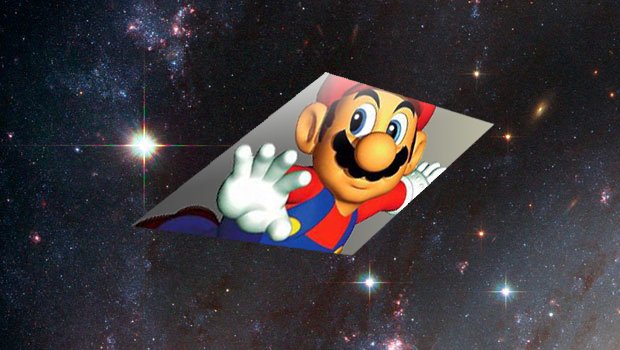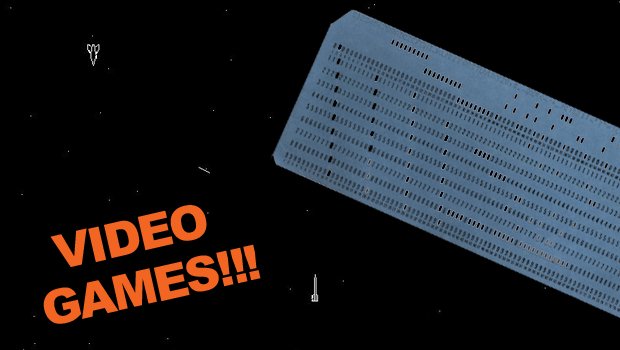The Top 7... Insanely stupid video game storage media that had no right to work
But some of them did. Sort of
Video games,we're sure we can all agree, are pretty great. In their completed form (or at their least ready-for-fourteen-patches-form) they illuminate our lives with multitudinous delights, beaming purest joy from our TVs, through our eyes, and straight into our brains. But they don't just appear in the world fully-formed. No, they must first be birthed from whatever storage device their magical digital code of dreams is stored on.
Usually these days, that means discs or cartridges, or maybe an internet pipe and your hard drive if you're downloading. But it wasn't always like this. Over the years we've seen some weird, foolhardy, and downright certifiably, illogically insane ways of getting games from developers' computers to your home. In fact one or two of them only just stopped short of steam-power and shamanic ritual. You've probably forgotten a lot of them, or maybenever evenknew them. And in many cases that's a good thing. But we're going to remind you regardless, because we're like that.
7. Cardboard
So, video games then. Essentially deeply interactive computer programsaugmented byall kinds of flashy visual and aural sense-massage. So the programmed data that runs them has to be on some kind of high-tech digital conduit from the future, some kind of cybernetic Tron-style holding pen for electronic data-beasts. Like the Phantom Zone crystal in Superman II, but with more lasers and circuits and things.

Above: Come to me, son of Jor-El. Kneel before Mario!
Not so. You see it seems that cardboard works too. Yeah, cardboard. Not only mighty enough to be able to keep the likes of corn flakes and playing cards imprisoned, cardboard can run video games as well. Truly, it is one of our most powerful resources. Need evidence of this? Right then. Without cardboard, we might not even have video games at all right now. You see one of the very earliest games, 1962’s Spacewar! was run on cardboard.

The humble punch card, which comprises a piece of card communicating digital information by way of the presence or absence of holes, was first used in the 19th century to ‘program’ textile looms. And for want of anything better, we were still using them in the mid-20th century. Early computers, those hulking great, room-sized goliaths that resembled Stone Henge and very probably worked by way of similar druidic rites and mysticism, used them as both storage format and programming language. And when a bunch of industrious MIT students created Spacewar! in their spare time in 1962, punch cards are exactly what they used to run it.
So yeah. Cardboard. Video games. Respect is due.
Weekly digests, tales from the communities you love, and more
Greatest advantage as a format
You could technically carry game code in your pocket, prompting the outside possibility of very legitimate “Is that a starship in your pocket, or are you just pleased to see me?” gags.
Greatest disadvantage as a format
You’d need legions of cards to make a complex program, meaning that the above comedy optionis only really available to those with Guybrush Threepwood-standard pockets and the titanium belt then required to keep their trousers up. Also, programming could take all night, you’d have to make a whole new card if you put a hole in the wrong place. And due to the structural integrity of pressed wood pulp, early game code was essentially water-soluble.
6.A tin of beans
Not all game content begins life as game content. Sometimes it is found wasting its potential in another form, like a future world-class ballet dancer working as a lumberjack, unaware of his latent talents until someone points out that, hey Bob, you sure do chop down them trees in a graceful manner, maybe you should try out for the stage. And there then follows a whole sequence of aspirational drama, hopes, dreams, self-doubt and ultimate self-realisation by way of extended montage sequences and cynical release scheduling in order to win a cheap Oscar nod. Yeah, game content can be like that sometimes. Sometimes, for example, game content starts out life as a tin of beans.

Above: NOT LIKE THIS
Much like the way that a sculptor does not model a stone into a work of art, but rather releases the work of art that was already inside the stone by chipping away the unnecessary parts which hamper its form, the Barcode Battler liberated the latent game aspirations of the world’s everyday grocery products, turning the simple pricing data held withinthe graphical serial numbers on their labelsinto a legion of proud, mighty warriors, insidious creeping enemies and strength-rallying, life affirming power-ups.
Above: LIKE THIS!
Initially released as a standalone barcode scanner cum LCD handheld in 1991, Epoch's Barcode Battler was reissued in 1992 as the upgraded Barcode Battler II, a more versatile device which could actually interface with the NES and SNES via an official Nintendo widget packaged with certain games. No longer restricted to little digital stat read-outs, the burgeoning game bits hidden away on innocent looking packets of noodles and household cleaning products could finally become proper, pixelated in-game characters and objects. The BBII might only have been released in Japan and enjoyed success over a mere handful of games, but despite being an obscure and frankly quite weird bit of kit, its legacy lives on to this day. Remember the Game Boy Advance’s e-Reader add-on? That surely came about as a result of Nintendo’s dabbling withEpoch. And the 3DS’ QR reader function for transferring Miis via a quick stab of the camera button? Certainly a descendant.
Who knows? With a bit of emulation and an e-shop download, the 3DS could actually bring the Barcode Battler proper back to the gaming populace at large. The 3DS' tech seems sound for the purpose, so it certainly could happen. But probably not. It was a bit obscure and frankly weird, after all.
Greatest advantage as a format
You can find it everywhere, and it’s available for mere tens of pence if you go to Aldi. (other low-cost supermarkets are available)
Greatest disadvantage as a format
You'll have to wait a while between the initial shopping trip and loading up. You can’t really remove the label from tins that haven’t been used yet, as you’ll end up forgetting what’s in them and accidentally making cream of mushroom soup on toast. And there’s only so much badass, aspirational video game adventure you can attach to rooting around in a very real kitchen bin for power-ups.
Next: It all goes a bit Charlie and the Chocolate Factory


